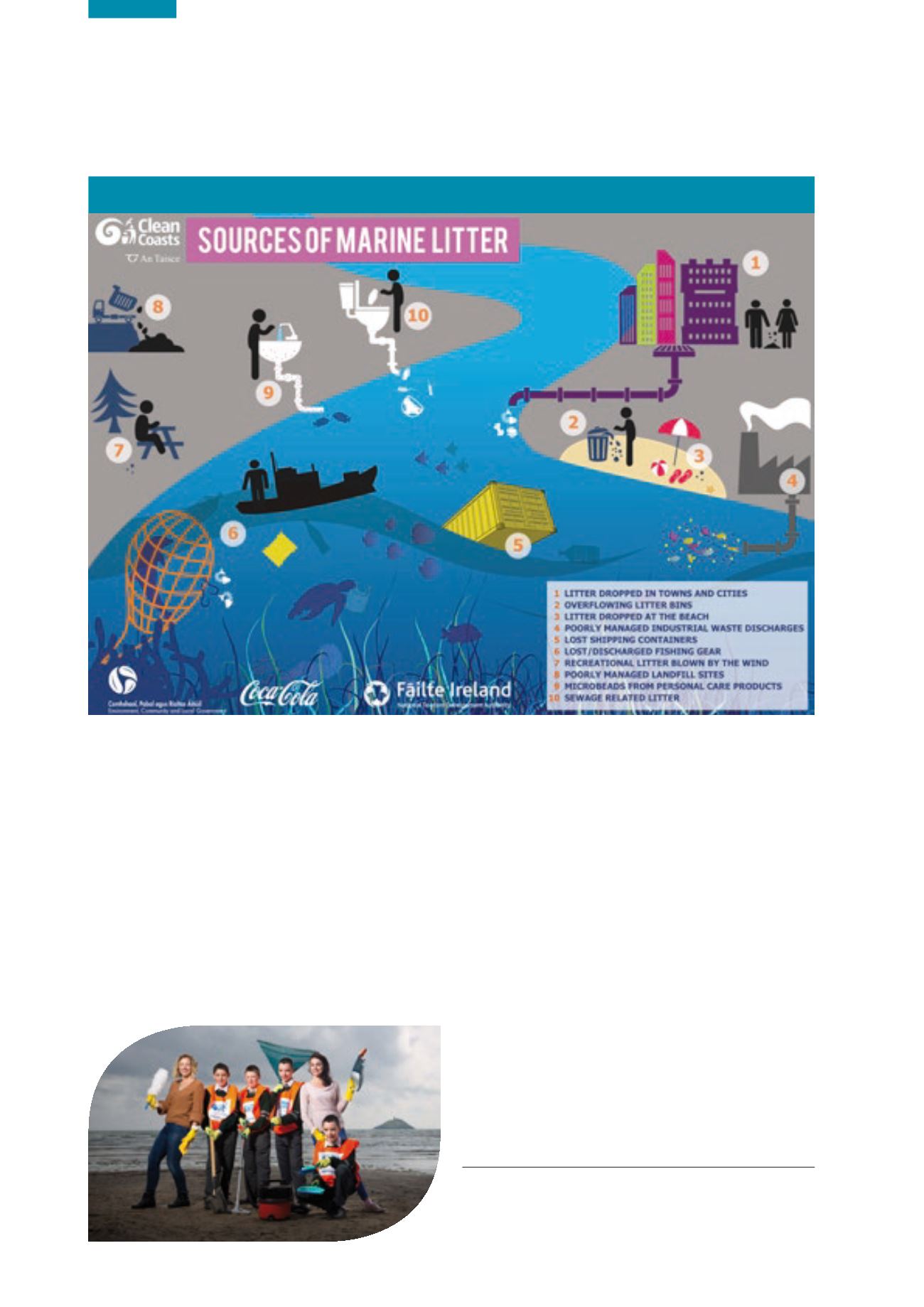

Ireland’s Environment – An Assessment 2016
102
Marine Litter
Marine litter is a threat to the health of our seas
and coasts.
Much legislative focus to date has been on waste in the
terrestrial environment, but marine litter is increasingly under
the spotlight. The EU Marine Strategy Framework Directive
(2008/56/EC) identifies marine litter as one area to tackle in
order to achieve good environmental status for all marine
waters by 2020. The 2030 UN Sustainable Development
Goals include a target to “prevent and significantly reduce
marine pollution of all kinds”. Marine litter comes from
land activities (e.g. littering, landfills, storm water drain
discharges) and marine activities (fishing, offshore mining
and extraction, illegal dumping at sea) and is a cross-border
problem; once it enters the sea, it has no owner (see
Figure 6.12). This makes its management dependent on
good regional and international collaboration.
Plastic debris is particularly worrying because of its
resistance to environmental breakdown. Marine species
are affected through ingestion and/or entanglement.
Microplastics or beads (items smaller than 5 mm) are of
particular concern due to their potential toxicity and size.
Microplastics come from products (cosmetic exfoliants,
industrial abrasives), fragments from larger plastics, or
fibres from washing clothes carried by sewage. While the
consequences of plastic build-up in the food chain are
not fully known, human health concerns are being raised.
Several NGO and State based campaigns are currently
focussed on banning micro-beads in product use.
16,17
Ireland has a number of citizen initiatives that monitor
and report on marine litter. The Clean Coasts Volunteering
Programme promotes and facilitates clean-up initiatives
and marine litter surveys.
18
Over 1,000 volunteers
participated in the 2015 All-Ireland Coastwatch Survey.
19
16
www.cleancoasts.org/our-initiatives/beat-the-microbead/17
www.marinedebris.noaa.gov/types-and-sources-solutions/states- consider-plastic-microbead-bans18
www.cleancoasts.org19
www.coastwatch.orgFigure 6.12
Sources of Marine Litter (Source: An Taisce)


















